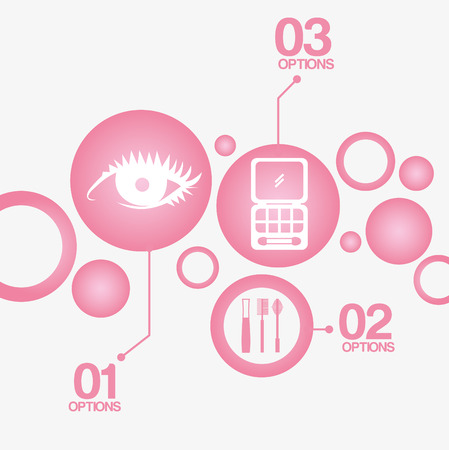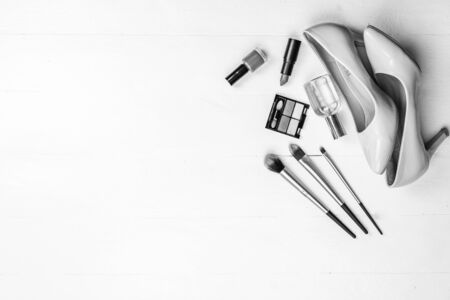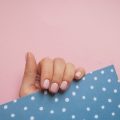Understanding At-Home Microneedling
If you’re looking to up your grooming game and get that sharp, healthy glow, at-home microneedling is fast becoming a top choice for men across the UK. But before you jump in, it’s important to know what you’re getting into. Microneedling involves using a handheld device with fine needles to create tiny punctures in the skin’s surface, encouraging natural collagen production and boosting skin renewal. For gents, this translates to smoother skin, reduced acne scars, smaller pores, and a fresher complexion – all without stepping foot in a clinic.
While the benefits are compelling, there are key factors UK users should keep in mind. The climate here can affect your skin’s recovery – think cold winters or damp weather – so aftercare is essential. Additionally, make sure any device you purchase meets UK safety standards and comes from a reputable retailer. Before starting any new routine, especially one involving needles, consider your skin type and any pre-existing conditions like eczema or active acne. Consulting a local skincare professional or GP can help ensure microneedling is right for you. Remember: patience and consistency are vital; results don’t happen overnight but with the right approach, you’ll see real improvements.
2. Choosing the Right Device and Tools
Before you get started with at-home microneedling, it’s vital to ensure you select a device that meets UK safety standards and is suitable for your skin concerns. The UK market offers a range of devices, but not all are created equal. Always opt for reputable brands that comply with local regulations such as CE marking, which indicates conformity with health, safety, and environmental protection standards for products sold within the European Economic Area (EEA), including the UK.
Key Considerations When Selecting Your Device
- Needle Length: For home use in the UK, stick to devices with needles no longer than 0.5mm. Longer needles should be used by professionals only.
- Material Quality: Choose devices made from medical-grade stainless steel or titanium for durability and hygiene.
- Brand Reputation: Look for British-based or well-reviewed international brands, preferably those registered with the MHRA (Medicines and Healthcare products Regulatory Agency).
- Availability: Ensure replacement heads or rollers are easily available through UK retailers or pharmacies.
Essential Accessories
| Accessory | Purpose | Where to Buy in the UK |
|---|---|---|
| Sterilising Solution | Keeps device hygienic between uses | Boots, Superdrug, Amazon UK |
| Numbing Cream (if required) | Minimises discomfort for sensitive skin types | Chemist Direct, LloydsPharmacy (check suitability) |
| Skin-Soothing Serum (e.g., hyaluronic acid) | Aids recovery and hydration post-treatment | Cult Beauty, Lookfantastic, local chemists |
| Antibacterial Wipes | Cleans surfaces and device pre-use | Tesco, Boots, Sainsbury’s |
Tip for British Gents:
If you’re new to microneedling, start with a well-known brand like Swiss Clinic or Medik8—both widely available in the UK. Always check customer reviews and confirm that your chosen kit comes with clear instructions in English.

3. Preparing Your Skin and Workspace
Step-by-Step Preparation Guide
Before you even touch your microneedling device, proper preparation is essential for both safety and effectiveness. In the UK, maintaining the highest hygiene standards at home is crucial to avoid infection or unwanted side effects. Here’s how you can get started:
Cleansing Your Skin
Begin by thoroughly washing your face with a gentle, fragrance-free cleanser suited to your skin type. This removes any dirt, oil, or impurities that could enter the micro-channels created during microneedling. Rinse with lukewarm water and pat dry with a clean towel—avoid rubbing as this can irritate the skin.
Sterilising Your Microneedling Device
Next, sterilise your microneedling device using a UK-approved disinfectant, such as surgical spirit or 70% isopropyl alcohol. Soak the roller head or needles for around 10-15 minutes, then carefully place it on a clean paper towel to air-dry. Never use a device straight from the box without sterilisation, even if it’s brand new.
Setting Up a Hygienic Area at Home
Choose a well-lit area with minimal distractions—preferably in your bathroom or bedroom where surfaces are easy to disinfect. Wipe down your workspace with antibacterial wipes or sprays commonly available in the UK. Lay out all necessary items (sterilised device, clean cotton pads, gloves, serum) on a fresh paper towel. Make sure your hands are freshly washed or wear disposable gloves to reduce contamination risk.
UK Best Practices
It’s wise to keep pets and other household members away from your setup while you’re working. Dispose of any single-use items responsibly according to local council guidelines. By following these steps, you’ll create a safe environment that meets UK standards and helps ensure your at-home microneedling experience is both effective and hygienic.
4. Safe Microneedling Technique
When it comes to at-home microneedling, proper technique is essential, especially for gents who want to avoid unnecessary discomfort and achieve professional-level results. Here’s how to use your device safely and effectively, using straightforward British guidance.
Preparation
Ensure your face is thoroughly cleansed and completely dry. Tie back any facial hair if needed, and have a clean towel on hand. Always sterilise the device before use—either soak the head in 70% isopropyl alcohol for 5–10 minutes or follow the manufacturer’s instructions.
The Correct Method
Follow these steps for the best outcome:
| Step | Instructions |
|---|---|
| 1. Section Your Face | Mentally divide your face into sections: forehead, cheeks, nose, chin, and jawline. This helps maintain even coverage. |
| 2. Begin Rolling | Gently roll the device over each section vertically, horizontally, then diagonally. Apply minimal pressure—let the weight of the device do the work. |
| 3. Overlap Slightly | Overlap each pass by about half the width of the roller to ensure no area is missed. |
| 4. Avoid Sensitive Areas | Steer clear of eyelids, lips, and any active acne or open wounds. |
Pace Yourself
Aim for 6–8 passes per area (in total), but don’t linger on any one spot. The entire process should take roughly 5–10 minutes depending on beard coverage and face size.
Trouble Spots for Men
Men often have thicker skin around the jawline and more facial hair. If you have a beard, focus on areas not covered by hair or consider trimming beforehand for even contact.
Sensation & Comfort
You might feel mild tingling or warmth—this is normal. If you experience sharp pain or bleeding (other than tiny pinpricks), stop immediately and review your technique or needle length. For beginners in Britain, a needle length of 0.25mm–0.5mm is usually sufficient for home use.
Aftercare Is Key
Once finished, rinse your face with cool water and apply a fragrance-free moisturiser or serum containing hyaluronic acid. Avoid shaving, hot showers, or harsh products for at least 24 hours post-treatment to let your skin recover fully.
5. Post-Treatment Care and Aftercare Products
Proper Aftercare for Optimal Results
After completing your at-home microneedling session, it’s essential to follow a solid aftercare routine to protect your skin and encourage the best results. Your skin will be more sensitive than usual, so gentle handling is key. Avoid touching your face with unwashed hands, refrain from heavy exercise that may cause excessive sweating, and steer clear of saunas or hot showers for at least 24 hours post-procedure.
Recommended UK Products for Recovery
Choose fragrance-free, hydrating serums containing hyaluronic acid as your first layer after microneedling. Brands like The Ordinary Hyaluronic Acid 2% + B5 or La Roche-Posay Hyalu B5 Serum are widely available in the UK and perfect for locking in moisture without irritation. For soothing redness or discomfort, look for products such as Avène Thermal Spring Water Spray or CeraVe Hydrating Cleanser, both trusted by British men for their gentle touch.
Protecting Your Skin from Sun Damage
Your skin will be particularly vulnerable to UV rays following microneedling. Even on cloudy days in the UK, apply a broad-spectrum sunscreen with at least SPF 30 before heading out. Men can opt for lightweight formulas like Eucerin Oil Control Sun Gel-Cream SPF 50+, which absorbs quickly without leaving a greasy residue or white cast.
What to Avoid After Microneedling
- Avoid alcohol-based toners or aftershaves, as these can sting and delay healing.
- Hold off on retinol or vitamin C serums until your skin has fully recovered—generally about three to five days post-treatment.
- Refrain from shaving the treated area for at least two days to prevent irritation.
Extra Tips for Men’s Skin
Men’s skin can be thicker and oilier than women’s, but don’t be tempted to over-cleanse or scrub while healing. Stick to gentle patting motions when applying products and always use clean towels. If you’re prone to ingrown hairs, consider using a soothing aloe vera gel (such as Holland & Barrett Aloe Vera Gel) after the initial 24-hour period to calm any irritation.
By sticking to these simple yet effective steps and choosing reputable aftercare products easily found in UK shops or chemists, you’ll help ensure your microneedling journey leads to smoother, healthier-looking skin without unnecessary setbacks.
6. Potential Risks and When to Seek Medical Advice
While at-home microneedling can be a game-changer for your grooming routine, it’s important to be aware of the potential risks involved. Understanding common side effects, recognising warning signs, and knowing when to seek medical advice will help you navigate this treatment safely within the UK.
Common Side Effects
After using a microneedling device, it’s completely normal to experience mild redness, slight swelling, and a sensation similar to mild sunburn. Some users may also notice minor pinpoint bleeding or flaking as the skin heals. These side effects usually subside within 24-48 hours. Using a gentle moisturiser and avoiding harsh skincare products during this period can help soothe the skin.
Warning Signs to Watch Out For
It’s crucial to monitor your skin closely post-treatment. If you notice any of the following, it could indicate something more serious:
- Persistent redness or swelling lasting more than three days
- Yellow or green pus, indicating possible infection
- Severe pain or increasing discomfort
- Rash, blistering, or significant peeling beyond normal exfoliation
- Sudden changes in skin colour (such as dark patches)
When to Consult a Local GP or Dermatologist
If you encounter any of the warning signs above or if you have underlying skin conditions like eczema, active acne, or rosacea that seem to worsen after microneedling, it’s best to consult your local GP or a qualified dermatologist in the UK. Don’t hesitate to seek professional advice if you’re unsure about your reaction; early intervention can prevent complications. Remember, your local NHS surgery or private clinics are well-versed in these concerns and can offer tailored guidance based on your needs.
Final Thought
The key to safe at-home microneedling is vigilance and proper aftercare. Always err on the side of caution—if something doesn’t look or feel right, reach out to a healthcare professional promptly for peace of mind and optimal results.

